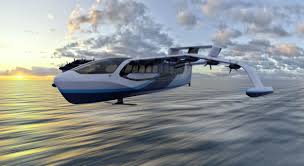
Breaking News
 Wash Post Editorial Board Turns Against Climate Agenda?!
Wash Post Editorial Board Turns Against Climate Agenda?!
 One Year Ago I Predicted and Described in Detail Huge Mars AI Plans that Elon Musk Confirmed...
One Year Ago I Predicted and Described in Detail Huge Mars AI Plans that Elon Musk Confirmed...
 British Teachers To "Spot Misogyny" In Boys And Target Them For Reeducation
British Teachers To "Spot Misogyny" In Boys And Target Them For Reeducation
 Democrats Refuse To Release Post-Mortem Of 2024 Election Loss, DNC Chair Says
Democrats Refuse To Release Post-Mortem Of 2024 Election Loss, DNC Chair Says
Top Tech News
 This tiny dev board is packed with features for ambitious makers
This tiny dev board is packed with features for ambitious makers
 Scientists Discover Gel to Regrow Tooth Enamel
Scientists Discover Gel to Regrow Tooth Enamel
 Vitamin C and Dandelion Root Killing Cancer Cells -- as Former CDC Director Calls for COVID-19...
Vitamin C and Dandelion Root Killing Cancer Cells -- as Former CDC Director Calls for COVID-19...
 Galactic Brain: US firm plans space-based data centers, power grid to challenge China
Galactic Brain: US firm plans space-based data centers, power grid to challenge China
 A microbial cleanup for glyphosate just earned a patent. Here's why that matters
A microbial cleanup for glyphosate just earned a patent. Here's why that matters
 Japan Breaks Internet Speed Record with 5 Million Times Faster Data Transfer
Japan Breaks Internet Speed Record with 5 Million Times Faster Data Transfer
 Advanced Propulsion Resources Part 1 of 2
Advanced Propulsion Resources Part 1 of 2
 PulsarFusion a forward-thinking UK aerospace company, is pushing the boundaries of space travel...
PulsarFusion a forward-thinking UK aerospace company, is pushing the boundaries of space travel...
 Dinky little laser box throws big-screen entertainment from inches away
Dinky little laser box throws big-screen entertainment from inches away
 'World's first' sodium-ion flashlight shines bright even at -40 ºF
'World's first' sodium-ion flashlight shines bright even at -40 ºF
First electric seaglider finally hits the water with real passengers

The seaglider takes advantage of what's called the wing-in-ground-effect – where a winged vehicle experiences less aerodynamic drag when it's close to the surface it's flying above, like the ground or a water body.
With its numerous propellers mounted on a blown wing, the Regent Viceroy Seaglider promises to carry 12 passengers and two crew (or 3,500 lb/1,600 kg of cargo) over at least 180 miles (300 km) at a 180 mph (300 km/h) cruise speed, flying at ultra-low altitudes of just 30-60 ft (9-18 m) above the water.
The company won approval from the US Coast Guard to run tests of a full-size prototype of the Viceroy last September, and it's finally pulled it off. As the label implies, this is the same size as the upcoming production version, measuring 55 ft (16.75 m) long with a 65 ft (19.8 m) wingspan. Regent notes it can simply float on the hull, foil above the waves on its hydrofoils, and fly in ground effect slightly above the surface of the water.
This test follows years of work developing the seaglider since the company was founded in 2020. It took two years to build and fly a quarter-scale prototype; this full-size one got out on the water after months of testing of its various onboard systems, including motors, batteries, and vehicle control software.
With that, Regent is closer to making good on its investors' US$90-million bet to bring electric high-speed coastal transport to market. The company says it's already landed orders totaling more than $9 billion from around the world, and believes its vessels will ferry tourists between tropical islands, transport cargo, and assist in emergency response. It's also partnering with the US Marine Corps to explore maritime defense and logistics applications.
Regent also has a large manufacturing facility in the works in Rhode Island, which it hopes to inaugurate next year. That means we're not too far off from low-flying electric-boat-plane-hydrofoil hybrids hitting the seas, like almost nothing before them.



